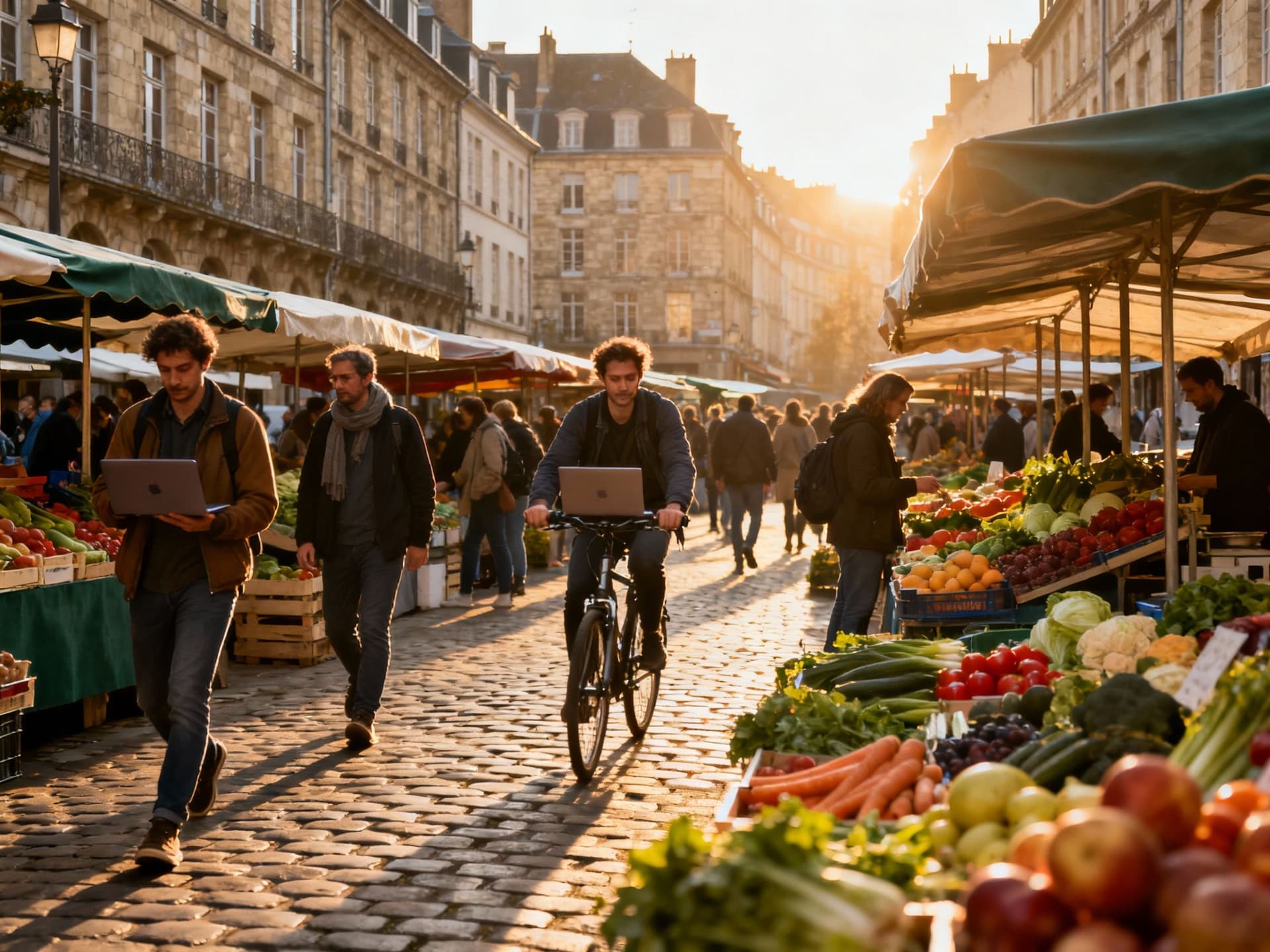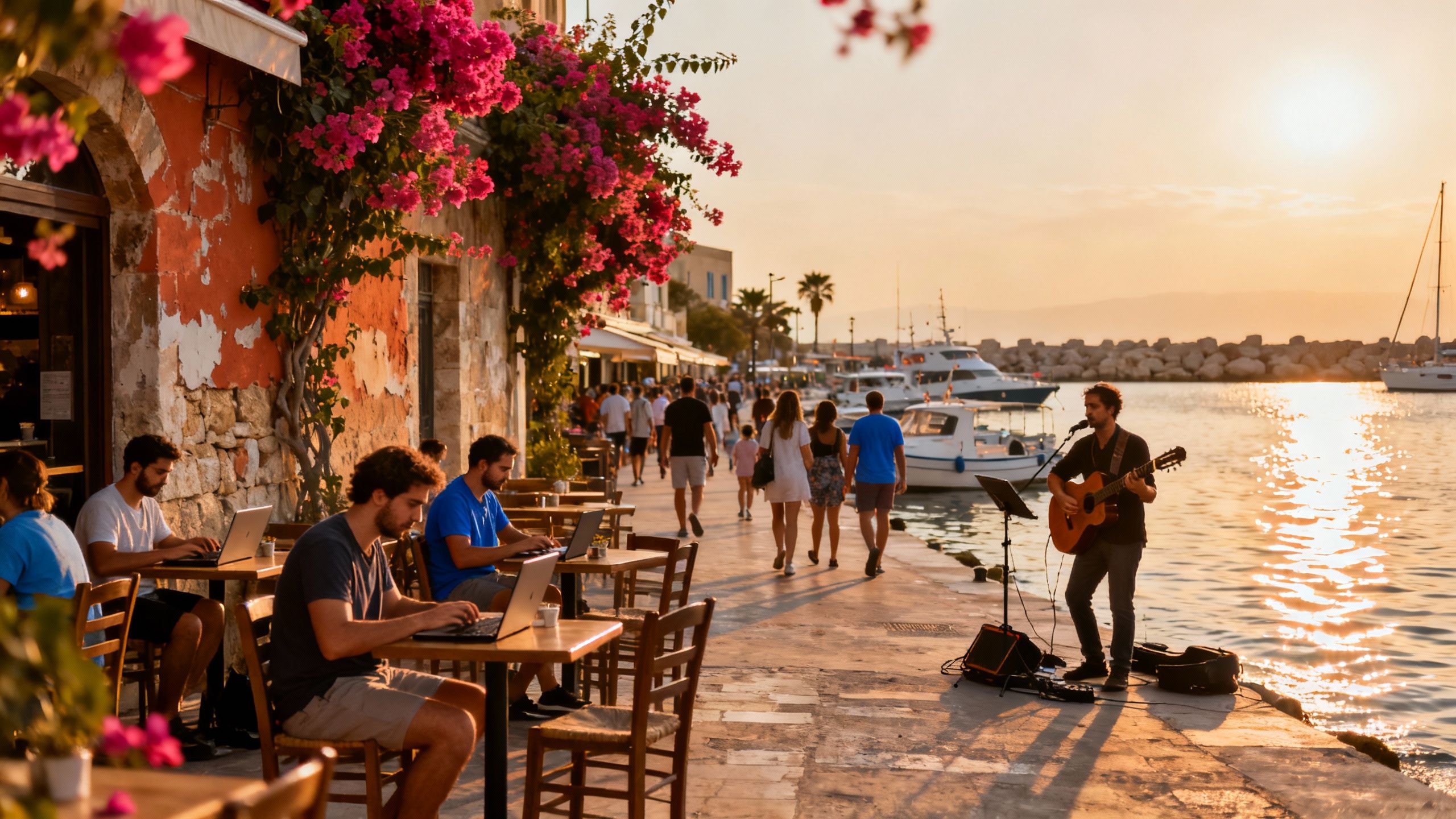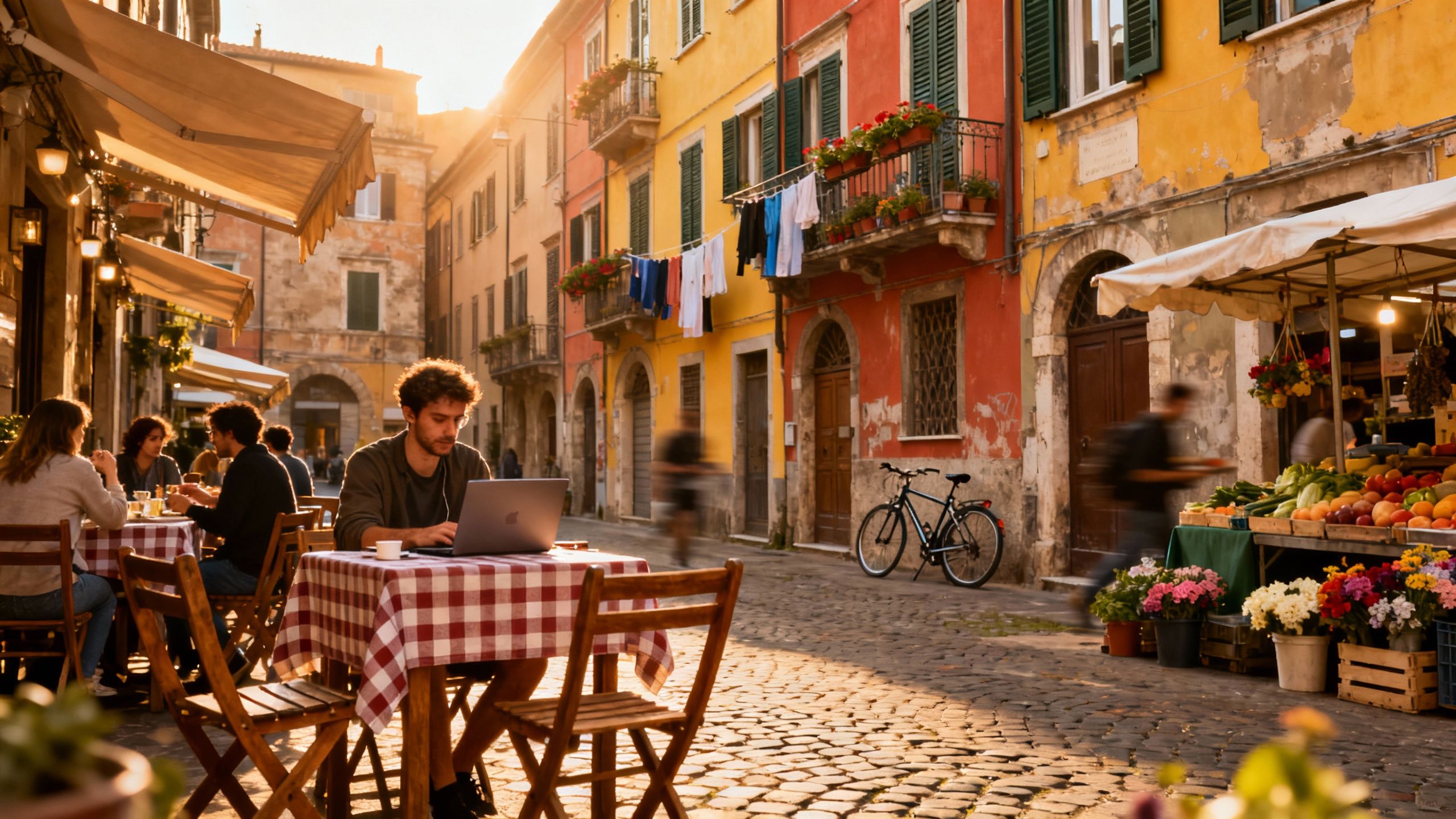Hidden French Regions That Give Nomads Residency Leverage
Regions like Rennes, Toulouse and Paris suburbs often offer faster residency routes, better value and coworking life than central Paris — check prefecture rules and fibre first.
Imagine stepping out for morning coffee on Rue Mouffetard, then hopping a TGV to a weekend vineyard in the Loire. In France, life is choreographed around markets, terraces and small routines that feel luxuriously slow — but the path from dream to legal residency isn't the same everywhere. This piece shows unexpected French regions where visa rules, good internet and real neighborhood life align for nomads and remote workers who want both lifestyle and a realistic path to stay.
Living the French life — what it really feels like

France moves at multiple speeds. In cities like Lyon or Bordeaux mornings mean boulangeries and commutes by tram; on the Riviera it’s terrace breakfasts and late evening passegiata. The everyday is shaped by weekly markets, small shops, and a generous public transport rhythm — and for anyone planning to stay longer than 90 days you’ll generally need a long‑stay visa (type D) or another qualifying permit. These practical rules shape where you can realistically build a life, not just visit. (See official summary of long‑stay visas from the French government.)
Neighborhoods that match nomad life
Not all French neighborhoods are created equal for remote work. Montreuil and Saint‑Ouen (Paris’s edges) give lower rents, creative energy and faster leases than central arrondissements. Elsewhere, cities like Rennes and Nantes combine strong coworking scenes, reliable fibre rollout and lively food markets without Paris-level pressure on housing. Picture afternoon walks along the Vilaine in Rennes or a sunset work session in a Nantes café with stable Wi‑Fi — that’s the sweet spot for many nomads.
Why skip the obvious? Paris is iconic but expensive and administratively tricky for freelancers. Recent reporting shows high living costs and rental hurdles push many nomads to inner suburbs or regional cities that offer better visa practicality, coworking scenes and value. The city’s pull is cultural; the smarter residency moves often happen where rules and lifestyle line up cleanly. (Read a field report on digital nomads in Paris and nearby suburbs.)
Visa‑friendly French regions that deserve a second look

Here’s the contrarian idea: you don’t need Paris or the Riviera to access a stable residency path. Regional prefectures in Brittany, Pays de la Loire and Occitanie can be easier to work with for residence cards and local integrations — and they offer strong local health services, TGV connections, and expanding fibre. Long‑stay visas (type D) and specific cards like the Passeport‑Talent still apply, but living outside hyper‑competitive markets often makes the administrative steps smoother and the lifestyle fuller. (Official France‑Visas explains visa types and follow‑up steps after arrival.)
Brittany & Rennes: fibre, markets and a friendly prefecture
Rennes quietly ticks many boxes remote workers want: reliable internet deployment, a compact historic center alive with cafés and markets, and a tech scene that feeds coworking hubs. You can rent a charming flat on Rue Saint‑Melaine, join a local makers’ meetup, and still get to Paris in under two hours by train for occasional business. For visa logistics, Rennes’ prefecture is known among expats for clearer appointment availability than Paris — that matters when switching a long‑stay visa into a titre de séjour.
Occitanie & Toulouse: sun, startups and smoother living
Toulouse pairs sunny terraces with an aerospace economy and a growing startup scene — ideal if you want community plus good connections. Neighborhoods like Saint‑Cyprien and Carmes have weekend farmers’ markets and quiet streets that convert well into home offices. Local prefectures outside capital cities often process residency permits with fewer backlogs, which speeds the path from tourist to resident.
Making the move: property types, agents and real tradeoffs
Dreams meet forms and files. Stone townhouses, modern apartments and renovated farmhouses all come with different visa and lifestyle implications: a rural farmhouse may be idyllic but requires strong proof of income if you’re applying for a self‑employed or visitor visa that expects sufficient resources. Work with agents who know local prefecture expectations and can advise on rental guarantees, utilities and internet contracts — the little administrative wins make a huge lifestyle difference once you arrive.
Property styles that suit remote life
Look for bright living rooms with desk space, balconies with cellular reception, and buildings with fibre offered to the unit. In cities, older Haussmann flats often have thick walls (quiet) but need wiring upgrades; in the regions, smaller modern developments can offer instant gigabit connections. Match the property to the rhythm you want: coastal cafés and evening swims, or compact city flats with a short bike ride to coworking?
Steps to marry lifestyle with legal residency
1. Choose a visa category that fits your work (long‑stay VLS‑TS, Passeport‑Talent, family or student). 2. Secure proof of stable income or accommodation — local rental contracts and bank statements help. 3. Register/validate your VLS‑TS or apply for a carte de séjour at the prefecture within the deadlines — missing this step creates complications. 4. Line up local services (fibre contract, bank account, health registration) so the move feels like life, not paperwork. Official sources explain the visa types and validation timelines more fully.
Insider knowledge: practical tips expats wish they’d known
Expat reality is full of small surprises. Locals often value patience and a brief effort in French — a few phrases open doors. Prefectures favor neat, complete applications; bring originals and well‑labelled copies. And when an agent says ‘quiet neighborhood,’ ask for a weekday morning visit — markets and schools can change the soundscape dramatically.
Real-life red flags when house‑hunting
No proof of fibre availability; unclear concierge or syndic fees; listings that omit annual taxe foncière; agents who cannot provide local prefecture appointment experience; properties with parking issues if you plan to travel regionally.
Long-term view: where life grows, not just prices
Buy with lifestyle horizons: will your neighborhood keep cafés, markets and coworking spaces as it grows? Regions with university presence (Rennes, Montpellier, Nantes) often sustain cultural life and rental demand. Think five years ahead: climate comfort, train links and local governance matter for everyday happiness — and for resale, too.
Conclusion: France is many countries in one. If you prize markets, good coffee, and a reliable path to residency, consider Rennes, Nantes, Toulouse or welcoming Paris suburbs over headline‑grabbing central districts. Start with an agent who knows the local prefecture, verify fibre and healthcare access, and test‑live a neighborhood for a month if you can. Do that and you’ll trade a tourist moment for a life that feels unmistakably French.
Dutch investment strategist guiding buyers to Greece and Spain; practical financing, tax, and portfolio diversification.


